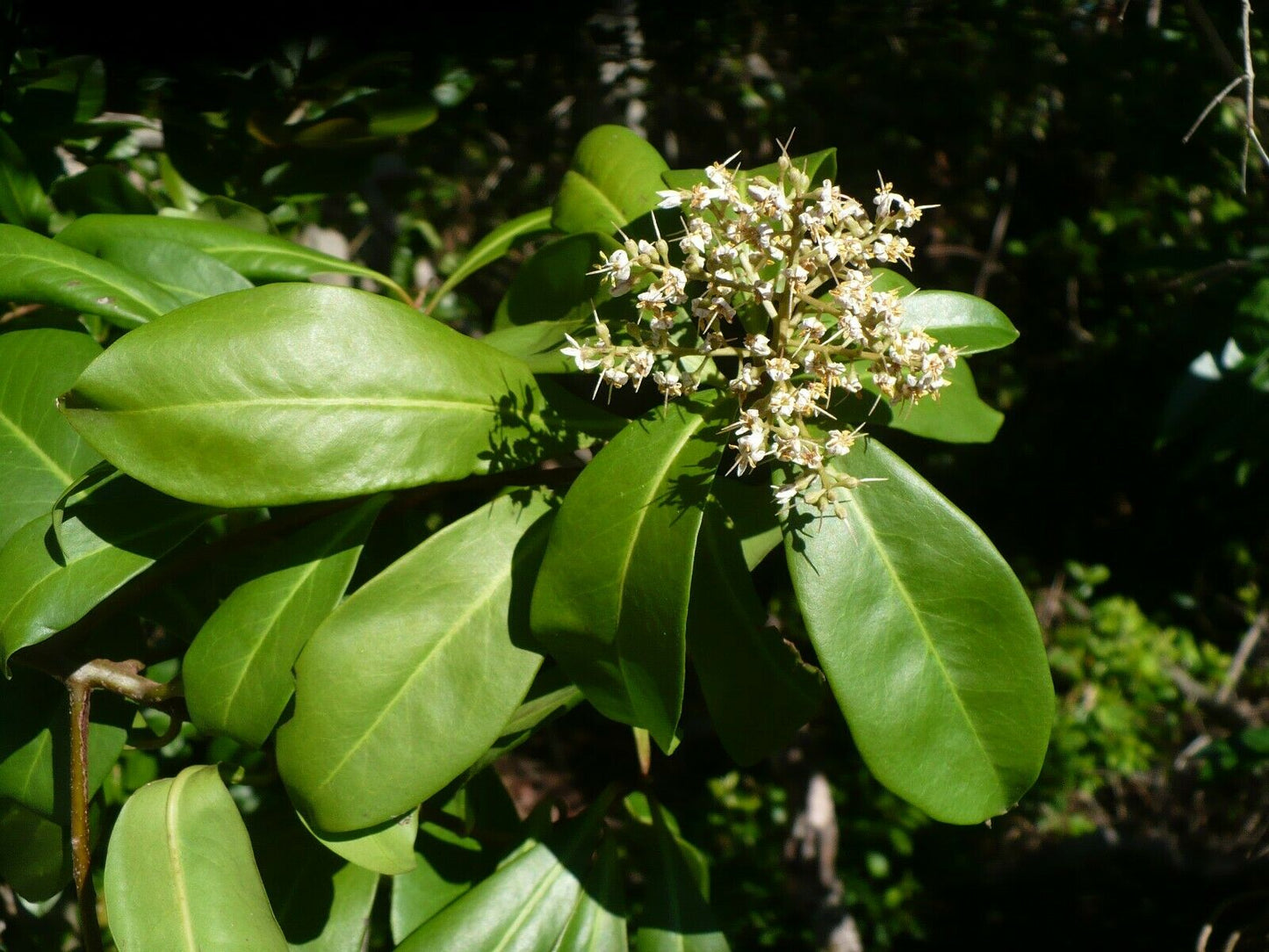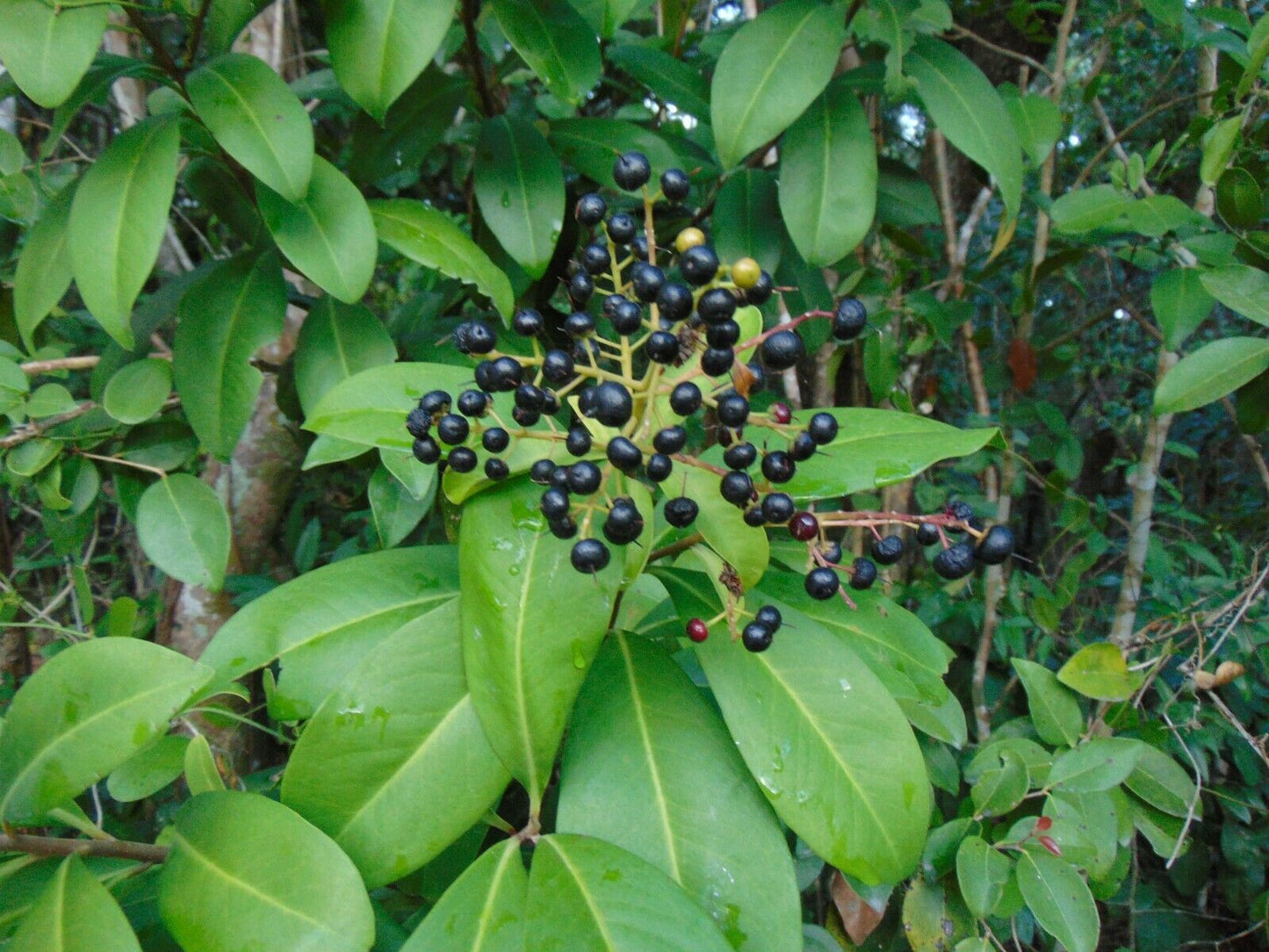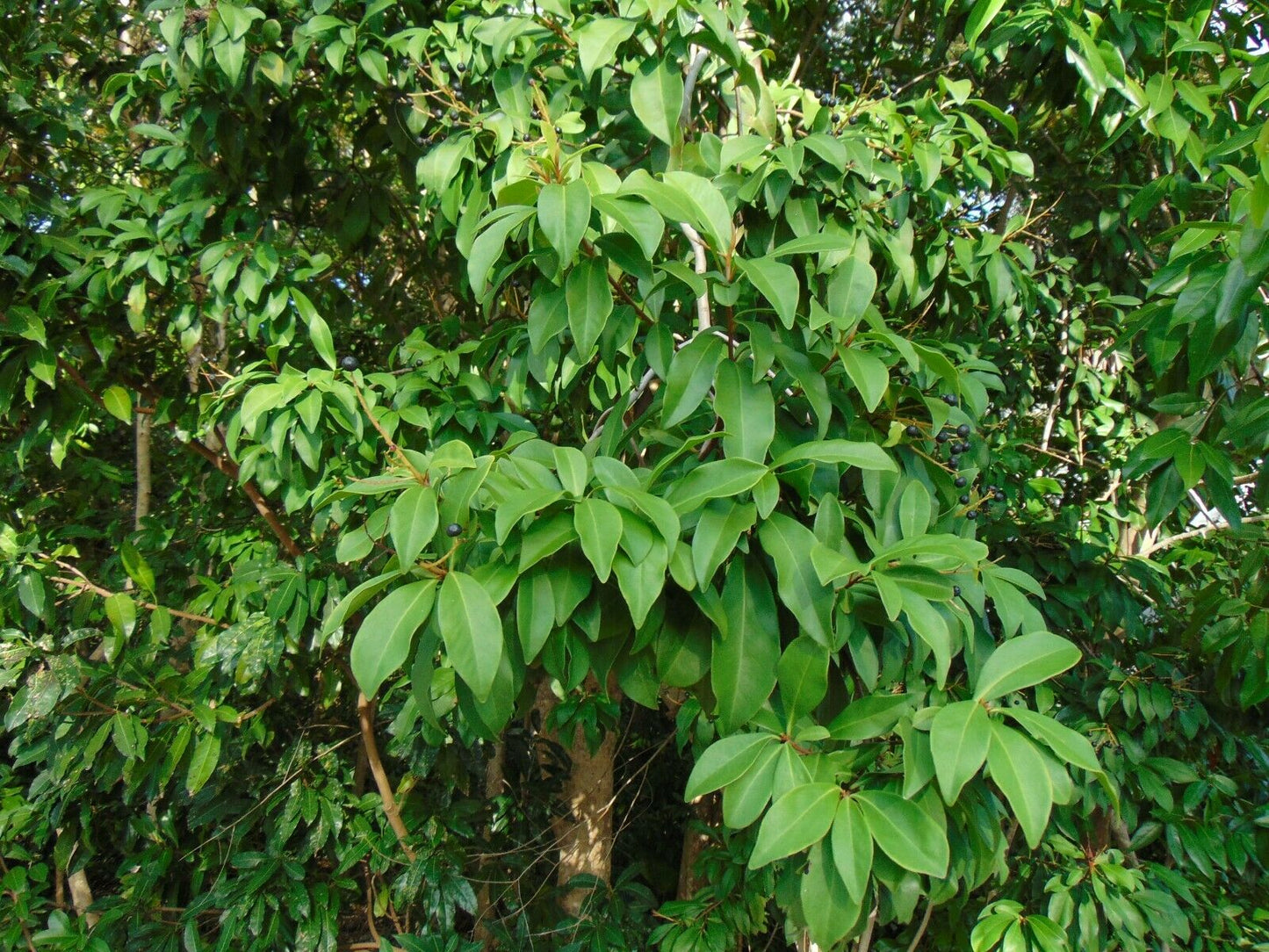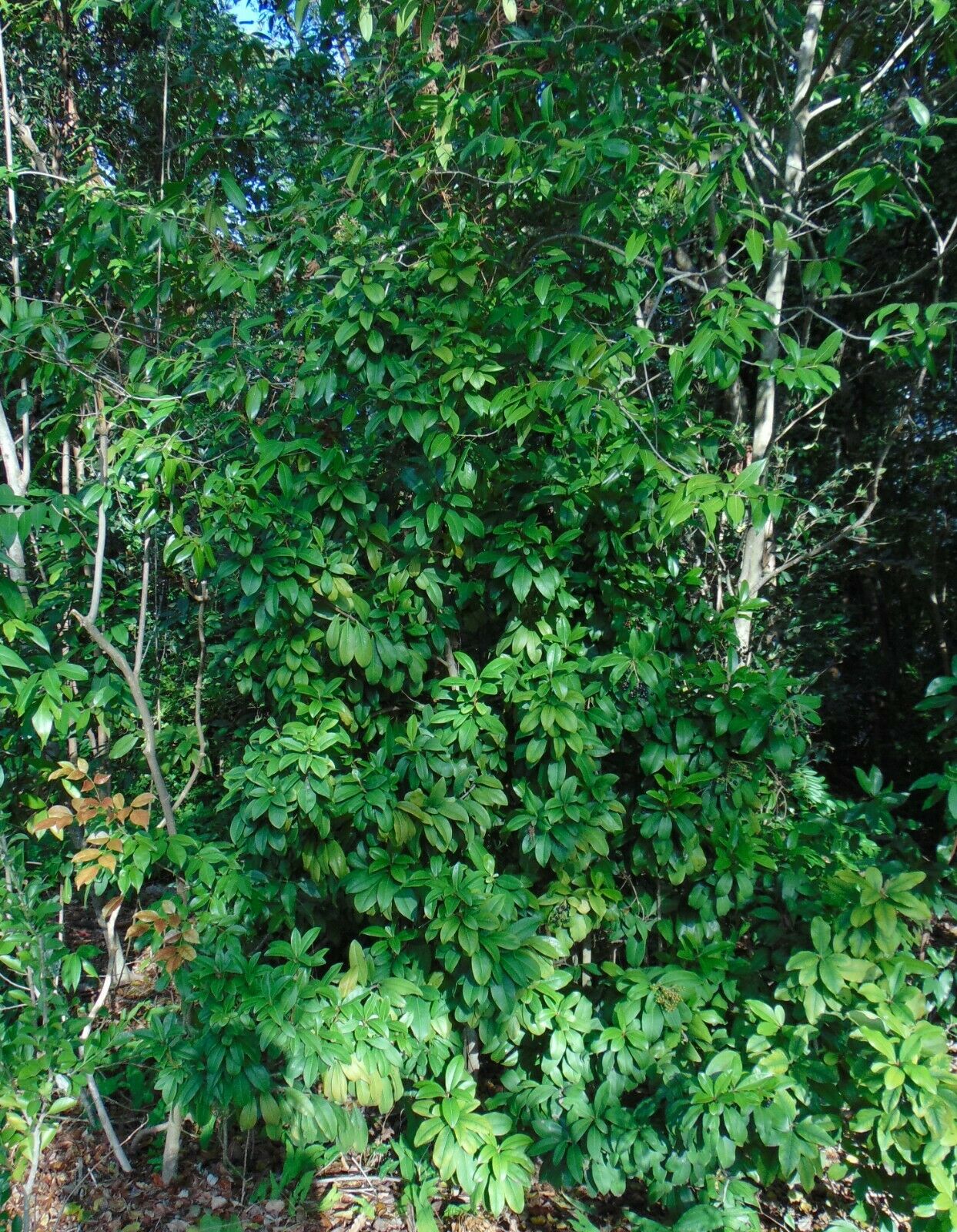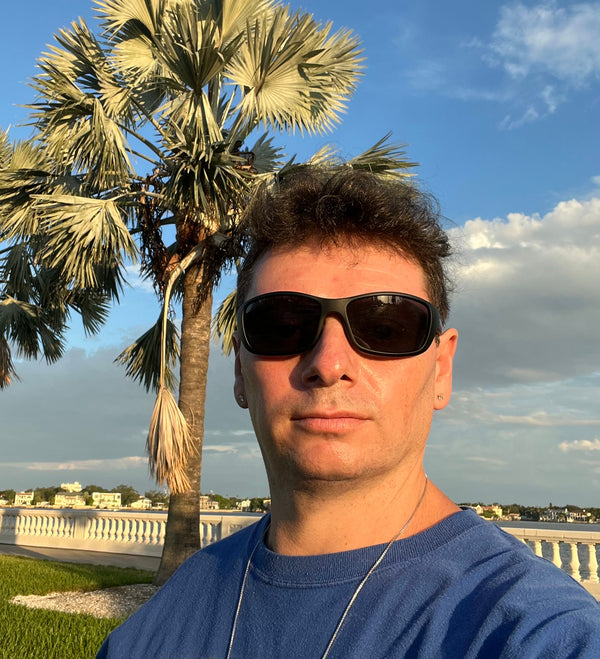Floridaseeds
Marlberry Ardisia escallonioides 10 Seeds USA Company
Marlberry Ardisia escallonioides 10 Seeds USA Company
Couldn't load pickup availability
Ardisia escallonioides, commonly known as Marlberry or Island Ardisia, is a flowering evergreen shrub native to Florida, the Caribbean, and parts of Central and South America. Here's a description of its key features:
Size and Growth Habit: Ardisia escallonioides typically grows as a compact, rounded shrub, reaching heights of 1 to 2 meters (3 to 6 feet) tall. It has a dense branching structure and a spreading habit.
Leaves: The leaves of Ardisia escallonioides are glossy, dark green, and elliptical to lanceolate in shape. They are arranged alternately along the stems and have entire margins (smooth edges). The leaves emit a distinctive, aromatic fragrance when crushed.
Flowers: Marlberry produces small, white, star-shaped flowers that are borne in clusters at the tips of the branches. The flowers have five petals and are often inconspicuous among the foliage. They bloom intermittently throughout the year, with peak flowering occurring in spring and summer.
Fruit: Following pollination, Ardisia escallonioides develops small, round berries that ripen to a glossy black or purplish-black color. The berries are a prominent feature of the plant and persist on the shrub for an extended period, providing ornamental interest and attracting wildlife.
Habitat: Marlberry is well-adapted to a variety of habitats, including coastal dunes, hammocks, pine flatwoods, and disturbed areas. It thrives in moist, well-drained soils but can tolerate a range of soil types, including sandy and clay soils.
Ecological Importance: The berries of Ardisia escallonioides are an important food source for wildlife, including birds and mammals. They are consumed by species such as mockingbirds, cardinals, raccoons, and squirrels, aiding in seed dispersal.
Landscaping Uses: Marlberry is valued as an ornamental shrub for its attractive foliage, flowers, and berries. It is often used in native plant landscaping, wildlife gardens, and coastal landscapes. It can be planted as a specimen shrub, massed for ground cover, or incorporated into mixed borders.
Cultural Significance: Ardisia escallonioides has cultural significance in some regions where it is native, and its berries have been used in traditional medicine for various purposes.
Growing Instructions
- Soak the seed in water for several hours.
- Prepare a mixture of half potting soil and half sand, perlite or vermiculite. Water the mixture so that it is moist but not wet.
- Put the seeds on the soil.
- Cover the seeds with a thin layer of soil.
- Water the seeds.
- Place the pots in an area with warm temperatures in full sun or part shade.
- When the seedlings are a few inches tall, they can be transplanted.
Materials
Materials
Shipping & Returns
Shipping & Returns
Dimensions
Dimensions
Care Instructions
Care Instructions
Share


